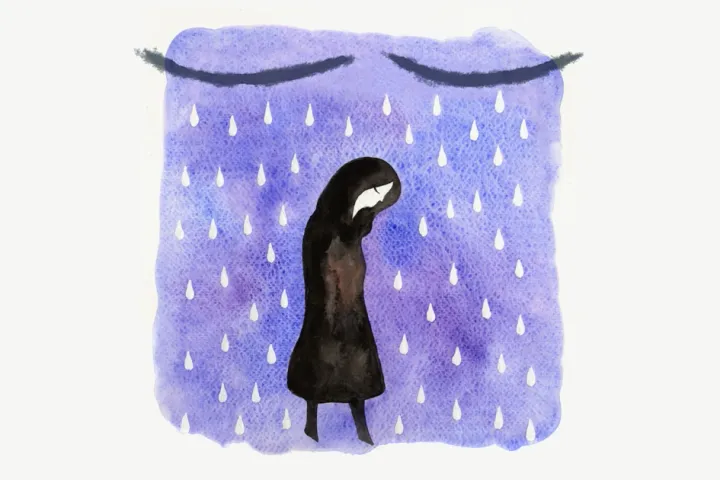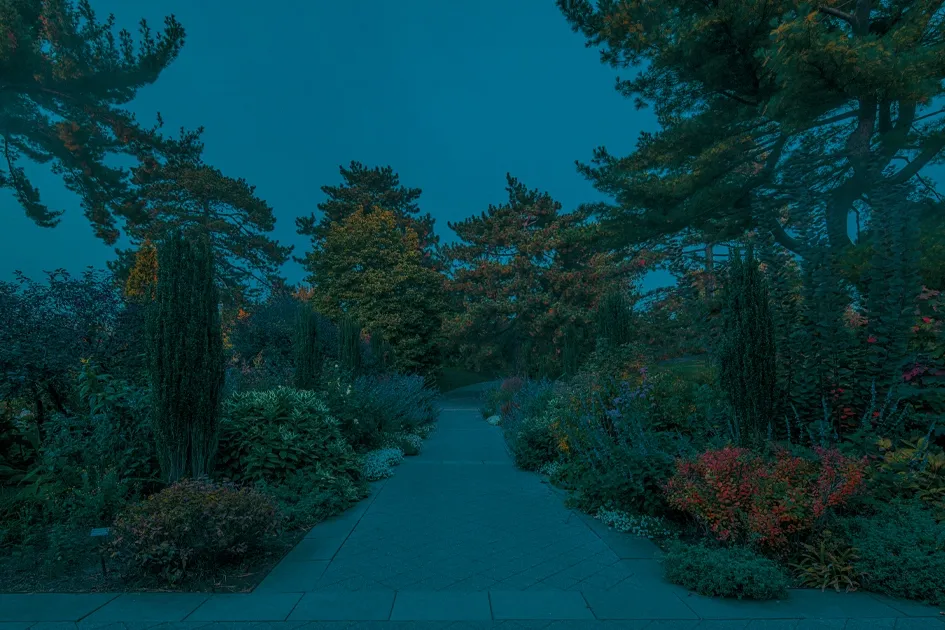I grew up surrounded by the illusion of life. My childhood home was full of silk plants that required no care or commitment. They offered a static kind of beauty, devoid of the mess and complexity of real plants. But as an adult, I found myself craving the vibrancy of living things and the promise of growth and change.
 Illustration by Patrick Ledger
Illustration by Patrick Ledger
A few years ago, I fell in love with a fiddle leaf fig. It came home with me and seemed perfect basking in sunlight in the corner of my living room. Lush green leaves unfurled, a testament to its initial health. For a while, it thrived. But then, brown spots began to show up, marring the perfection I’d been hoping for.
Then the paradox began: New leaves unfurled while the dreaded brown spots continued to spread. Both the growth and decline demanded resources yet yielded such different results. Confused and unsure, I did nothing. I was busy maintaining a “perfect” life, juggling work deadlines, social obligations, and family and felt like I didn’t have time to solve a flora-related mystery.
Thankfully, a friend of mine intervened. She is a woman with an impressive green thumb and a solution for the issues she couldn’t handle alone: a “plant guy” who offered house calls. “Of course, you have a plant guy!” I joked, a touch of envy in my voice. Here I was, struggling to keep a single plant alive, and she had an expert for her lush indoor jungle.
Her plant whisperer diagnosed the problem as “a lack of pruning and unbalanced care.” The new leaves were a sign of the plant's inherent strength, but they also drew energy away from the older parts, leading to the brown spots. Together, we embarked on a pruning mission. The diseased leaves were removed, and the healthy ones were reshaped to allow for better light distribution. Though a bit lopsided at first, the tree emerged stronger, its vibrant green revitalized.
As it turns out, I needed to do a little pruning in my own life as well. And here, too, the process wasn’t so simple. Outwardly, I was flourishing—my social calendar was packed full, and I was launching a new coaching and consulting career. But at home, things felt strained. My energy and focus went toward building a business, networking, and connecting with my clients—while leaving family at home eating cold leftovers. I’d come home exhausted and miss moments with my kids; I missed out on hearing about their day and what they were learning. I also overlooked the subtle ways my husband communicated his desire for connection, and my small selfish choices culminated over time to create a gap in our relationship. I was not offering my best to the people who mattered most and had difficulty seeing beyond myself. I was spreading myself thin, and it was showing.
The Bible says that God desires to reveal what needs to go, where we need pruning and shaping (John 15:2). He wants to cultivate beauty in our life, like the “plant guy” who helped me revitalize my once-doomed fiddle leaf fig. Letting go of familiar patterns—even if they are unhealthy—can be scary, but trusting in God's guidance allows us to create space for genuine growth. This could involve setting boundaries with friends or family who drain our energy, establishing routines that prioritize self-care, or even seeking professional help to address deeper issues.
Over the course of that strange season, some things in my life fell away naturally like dead leaves. But others, like unhealthy patterns and relationships, stubbornly clung on, requiring a more deliberate effort at removal. And I came to see that both kinds of letting go were critical if I wanted to truly care for my spirit.
So I began to prune—and it wasn't easy. It meant acknowledging my shortcomings and taking responsibility for the neglect that strained my relationships with others. I started practicing saying “no” to the Thursday night girls dinner and instead said “yes” to a family game night of Farkle with a side of homemade brownies and ice cream. I carved out time for activities that nourished my soul: reading on the porch while sipping my warm cup of coffee, journaling and meditating on Scripture, or walking the local trail in my neighborhood that is lined with moss and ferns year-round.
I paid attention to what helped me regulate my body and my soul, what centered my spirit and filled me with peace. I made a commitment to prioritize those moments. There were setbacks, of course. Old habits die hard, and “brown spots” reappeared. But each time that happened, I approached it as a learning experience, an opportunity to refine my pruning techniques.
As the psalmist says, even in our “old age,” we can bear fruit and “stay fresh and green” (Ps. 92:13-14 NIV). We can, and should, tend to our souls—our garden within—so that we can care for others as we care for ourselves (Matt. 22:39). This doesn't require living a pristine life, the kind that’s curated for social media. It's about the quiet, intentional acts of self-care that nourish our spirit and allow us to show up authentically in the world.
My life may not be picture perfect, but it’s now filled with genuine connections and a sense of wholeness I craved for so long. The journey of soul care is a continuous process, which echoes the wisdom of Ecclesiastes when it tells us there’s a “time to plant and a time to uproot what is planted” (Eccl. 3:2). And with each snip, I feel a sense of liberation, a tangible reminder that letting go can lead to renewal. As I cut back, God gave me a more vibrant, flourishing life, one that thrives from the inside out.





